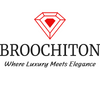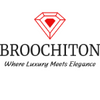When it comes to jewelry design, color is more than a visual flourish—it’s an emotive language. Mastering color theory and choosing complementary stones can elevate your work from pretty to unforgettable. With thoughtful palettes, you can evoke feeling, flatter skin tones, and create striking contrasts. This guide covers color theory basics, color psychology, harmony schemes, and practical, shop-floor tips to help your pieces sing.
The Basics of Color Theory
Color theory helps us understand how hues interact, shape perception, and carry emotion. It starts with the color wheel—primary, secondary, and tertiary colors—and extends into temperature (warm vs. cool), saturation (intensity), and value (lightness/darkness). These levers let you fine-tune harmony and contrast.
Primary, Secondary & Tertiary Colors
- Primary: Red, Blue, Yellow (cannot be mixed from other hues).
- Secondary: Green (Y+B), Orange (R+Y), Purple (B+R).
- Tertiary: Mix a primary with a neighboring secondary (e.g., teal, chartreuse, magenta). These nuanced hues are fantastic for refined palettes.
Using the Color Wheel & Complements
Complementary colors sit opposite on the wheel (e.g., blue–orange, red–green, yellow–purple). Pairing them delivers high contrast and visual pop—great for focal stones framed by small accents.
Harmony Schemes You’ll Actually Use
- Analogous: Three neighbors on the wheel (e.g., blue–teal–green). Feels cohesive and calming—perfect for stackable sets.
- Split-Complementary: One hue + the two flanking its opposite (e.g., blue with red-orange & yellow-orange). High interest, less clash than direct complements.
- Triadic: Three hues equally spaced (e.g., red–yellow–blue). Balanced and playful—keep one hue dominant to avoid chaos.
- Monochrome with Neutrals: One hue in varied values/saturation, grounded with neutrals (black onyx, white pearl, grey spinel).
Color Psychology (with Gem Examples)
Colors carry moods. Use them intentionally to match the story of your piece.
- Red: Passion & energy — ruby, garnet, red spinel. Pops against green (emerald, peridot) or cool metals.
- Blue: Calm & trust — sapphire, lapis, blue topaz, kyanite. Glows against warm metals or paired with orange accents (carnelian, fire opal).
- Green: Renewal & balance — emerald, tsavorite, jade, peridot. Harmonizes with pinks/purples (morganite, amethyst).
- Yellow: Joy & optimism — citrine, yellow sapphire. Electric with violet (amethyst) or grounding greys.
- Purple: Luxury & creativity — amethyst, lavender quartz. Regal with yellow gold or citrus accents.
- Orange: Warmth & confidence — carnelian, fire opal. Striking with teal/blue complements.
- Pink: Romance & softness — morganite, rose quartz, pink tourmaline. Fresh with sage/olive greens.
- Neutrals: Versatility & polish — black onyx, white pearl, moonstone, grey spinel. Anchor bolder palettes.
Harmony Beyond Color
Texture
Contrast smooth cabochons with raw crystals, frosted beads with high polish, or matte enamel with faceted sparkle. Textural counterpoints add depth even in restrained color palettes.
Shape & Form
Balance curves with angles: round stones beside baguettes; pear drops with geometric studs. Repeating one shape family across a set creates cohesion.
Metals, Undertones & Settings
- Metal Temperature: Yellow gold warms reds/oranges/yellows; white metals (platinum/white gold/sterling) sharpen blues/greens; rose gold flatters pinks and mauves.
- Undertones: Cool stones (blue-green) thrive in cool metals; warm stones (amber, citrine) glow in warm alloys. Mixed-metal settings can bridge split-complementary palettes.
- Setting Style: Prongs let in light (brighter, cooler); bezels deepen/soften color. Closed backs intensify dark tones; open galleries lighten the feel.
- Skin Undertone: Cool skin loves cool stones/metals; warm skin loves warm stones/metals; neutrals can swing both ways. When in doubt, test in daylight.
Practical Tips for Choosing Complementary Stones
- Keep a Color Wheel Handy: It’s your fastest route to confident pairings.
- Define the Mood First: Calm? Choose analogous + low saturation. Bold? Complementary + high saturation.
- Use the 60–30–10 Rule: 60% base hue, 30% supporting hue, 10% accent. Works for sets and single statement pieces.
- Check Value Contrast: Snap a grayscale photo of your layout—if it looks flat, increase light/dark contrast.
- Prototype Loosely: Mock layouts on a board or in a tray before committing to settings.
- Borrow from Nature: Ocean (teal/blue/sand), Forest (moss/olive/bark), Sunset (magenta/orange/violet) rarely steers you wrong.
Lighting & How It Changes Color
Light quality can shift a gem’s mood by a mile.
- Daylight (≈D65): Most true-to-tone.
- Warm LED (≈2700–3000K): Enhances reds/oranges; may mute blues/greens.
- Cool LED (≈5000K): Brightens blues/greens; can desaturate warm stones.
- Chameleons: Color-change stones (e.g., alexandrite) and pleochroic gems (iolite, tanzanite) shift dramatically—design to celebrate the change.
Display Tip: Layer soft, diffuse lighting from multiple angles to avoid harsh hotspots on facets and to reveal true saturation.
Color Meanings Across Cultures
- Red: Love/passion in many Western contexts; luck/celebration in many Eastern contexts.
- Blue: Calm/reliability widely; in some places can signal melancholy—know your audience.
- White: Purity in some cultures; mourning in others. Research before bridal/ceremonial collections.
Personalization & Audience Preferences
- Start with You: Choose colors you truly love—authenticity shows in the work.
- Listen to Clients: Poll your audience; review top-selling hues by season; offer swappable accents (charms, halos, enamel inlays).
- Offer Size/Value Options: A petite accent (10%) lets clients test a bolder hue before committing to a hero stone.
Quick Pairing Cheat Sheet
- Blue Sapphire + Carnelian/Fire Opal (complement) + White Gold
- Emerald/Tsavorite + Rose Quartz/Morganite (soft contrast) + Yellow Gold
- Amethyst + Citrine (complement) + Yellow Gold
- Citrine + Amethyst/Lavender Quartz (violet pop) + Oxidized Silver
- Teal Apatite/Paraíba-like Tourmaline + Coppery Enamel (split-comp) + Rose Gold
- Monochrome Black & White: Onyx + Pearl/Moonstone + Polished & Matte finishes for texture.
Make Your Colors Work Harder
Mastering color theory lets you design with intention—evoking emotion, guiding the eye, and flattering the wearer. Experiment, document what works in different lights, and build palettes you can remix across collections. When your colors harmonize, your pieces don’t just sparkle—they speak.





Leave a comment